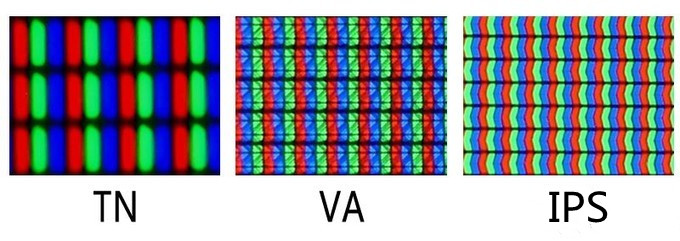The current market for computer monitors is LCD, which is what we call liquid crystal. It is roughly divided into three types of panels: TN, IPS, and VA. Each panel is very different and needs to be selected according to your daily needs.

The advantages and disadvantages of the three panels are detailed below:
1. TN panel
The advantages of TN panels are that the number of output gray levels is small, the deflection speed of liquid crystal molecules is fast, and the response time is easy to improve. A few years ago, only TN screens could be achieved within 5ms. In recent years, the technology has achieved 1ms, and even 0.4ms has appeared. The monitor, which is a good choice for serious gamers, uses TN panels for many refresh rates up to 240Hz. But the disadvantage is that its picture color is relatively poor and the viewing angle is small. The color difference means that the screen color is whitened. time has improved).
So this screen is mainly used for game e-sports players, and it is not suitable for daily and audio-visual use. The TN panel is a soft screen, and similar water marks will appear as long as you gently stroke it with your hand.
2. IPS panel
The IPS screen can be said to be an upgraded version of the tn screen. It is the preferred panel of many manufacturers. It converts the direction of the electric field that controls the liquid crystal from the original vertical direction to the horizontal direction, so that the liquid crystal molecules are connected to the liquid crystal regardless of whether it is powered or not. The screens are parallel and structurally optimized, resulting in a viewing angle of 178°.
The advantage of the IPS panel is that it has strong color and wide visibility, so it is a good choice for daily or image work. The disadvantage is that light leakage will occur, even at the price of 4K. It can only be seen on a pure black screen, so as long as the light leakage is not very serious.
In terms of IPS subdivision, there are also S-IPS, H-IPS, E-IPS, etc., so some IPS panels are sold very cheaply and you need to know which type they are. Their ranking is P-IPS>H-IPS>S-IPS >AH-IPS>E-IPS, the lower the panel, the worse. The response time of IPS panels has always been slightly slower than that of TN. In order to improve, Nano-IPS and Fast-IPS panels have been introduced, and the response time has been greatly improved. Many monitors with these two panels have reached 1ms (GTG). GTG is a standard statement. Many monitors below 3k like to have a 1ms response time, but they are marked with VRB and MPRT. This is achieved by reducing the blur of picture quality through technology. -5ms or so.
3. VA panel
This panel is mainly used for curved screens. It has the advantage of having a high contrast ratio, the highest of the three panels. The black is purer, the layering of the picture is stronger, and there is basically no light leakage, which is suitable for daily, audio and video use.
The disadvantage is: the response time is slightly poor, and there may be some smearing when playing FPS games. VA screens are mainly aimed at users who like large screens and audio and video.
TN panel:
The advantage of the TN panel is that it has an ultra-fast response speed, the lowest latency, and can achieve a true 1ms response. The downside is that the technology is older, and the color is the worst of the three panels, with a whitish color.
Professional e-sports monitors with this type of panel are used more, but for us, there is no need to sacrifice color in pursuit of that low latency. After all, we buy monitors not only for playing games.
IPS panel:
The IPS panel has the best color and color accuracy, and the arrangement of the liquid crystal is parallel to the screen, so it will not change color when viewed from any angle. And its response speed is not slow, about 3~5ms.
Some professional monitors use IPS panels, such as the Mac series. Although the panel itself does not represent high-end, for our ordinary users, the overall quality of IPS is indeed higher. No matter what you plan to buy, the first recommendation IPS panel.
VA panel:
VA panels are generally curved screens, and Samsung has the most. Due to the arrangement of the liquid crystal, the VA panel has a very high contrast ratio and low light leakage. The static display effect is very good, and the color is also acceptable. However, the response speed of the VA panel is the slowest, and the fastest can only reach 4ms, with an average of about 20ms, and there may be smears when playing games with high frame rates.
In short, these three have their own strengths, and none of the panels are completely inferior. Which one to choose depends on your own needs.









 Home
Home HEM LCD
HEM LCD  Jun 15,2023
Jun 15,2023 
 The principle of Liquid crystal display
The principle of Liquid crystal display 



